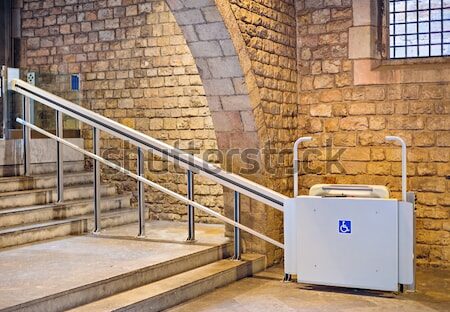There are more than 1.2 million wheelchair users in the UK alone, and the need for public buildings to implement a safe yet comfortable method of transportation is greater than ever.
With that said, some properties simply don’t have the space to build a wheelchair ramp or install a traditional passenger lift, making wheelchair lifts a brilliant alternative.
There are various options when it comes to wheelchair lifts – most notably vertical platform lifts (VPL) that transport the passenger seated in their wheelchair, and inclined lifts that run alongside a flight of stairs. And the best bit? Most models are suitable for indoor and outdoor use.
No matter which type of wheelchair lift you opt for, it’s crucial that you know how to use it properly to ensure the safety of the user. That’s why we thought we’d offer a few top tips to help…
5 safety tips for using wheelchair lifts
Always make sure the user is secure
Keeping the wheelchair user safe when the lift is in operation should be your no.1 priority.
Platform lifts tend to have a flap that can automatically fold up to create a barrier and prevent the wheelchair from moving. It’s also a sensible idea to lock the wheelchair wheels before the lift starts to ascend or descend.
Ensure safety features and controls are accessible
Whilst wheelchair lifts come with a host of safety features – including safety straps, obstacle detectors, and a backup battery, an emergency stop button has to be one of (if not) the most important.
Though unlikely, you want to be confident that the lift can be stopped safely when something goes wrong.
And clearly marked controls are deemed essential from a health and safety standpoint. After all, anyone using the lift needs to know which button they need to push in order to get to where they need to go.
Think carefully about the location of the lift
When deciding where to install a wheelchair lift, you need to consider how much room you have available and how much space a wheelchair user needs.
For example, installing a vertical platform lift in a confined area, like a corridor, is neither practical nor safe. There needs to be sufficient space for the wheelchair user to turn their chair around and to access the lift safely.
Alternatively, if space is at a premium already, a stairlift that can be folded up and stowed out of the way when it isn’t in use is ideal. It will allow users to reach different floor levels safely without taking up too much room and causing a trip hazard.
Make sure the stairs remain clear
Although a wheelchair lift doesn’t take up an awful lot of room, the safety of a journey can be improved by ensuring that the stairway is clear whilst it is in use. This, in turn, will help to prevent the wheelchair user and others from being injured.
Of course, if you have the luxury of space, you’ll be better off positioning the lift further away from the stairs to avoid interaction.
Think about fire safety
Wheelchair lifts are all about making areas safer and more accessible for those who require a wheelchair – so it’s important that you assess all of your options and choose the safest one.
The great thing about wheelchair lifts is that, unlike elevators, they don’t have a shaft where smoke can collect. However, they must operate on a backup generator in case an emergency strikes.
Get in touch
For more tips on how to use a wheelchair lift safely, or to discuss your requirements in more detail with the team, call Level Access Lifts on 023 8081 4924 or email info@levellifts.co.uk, and we’ll get back to you as soon as possible.

